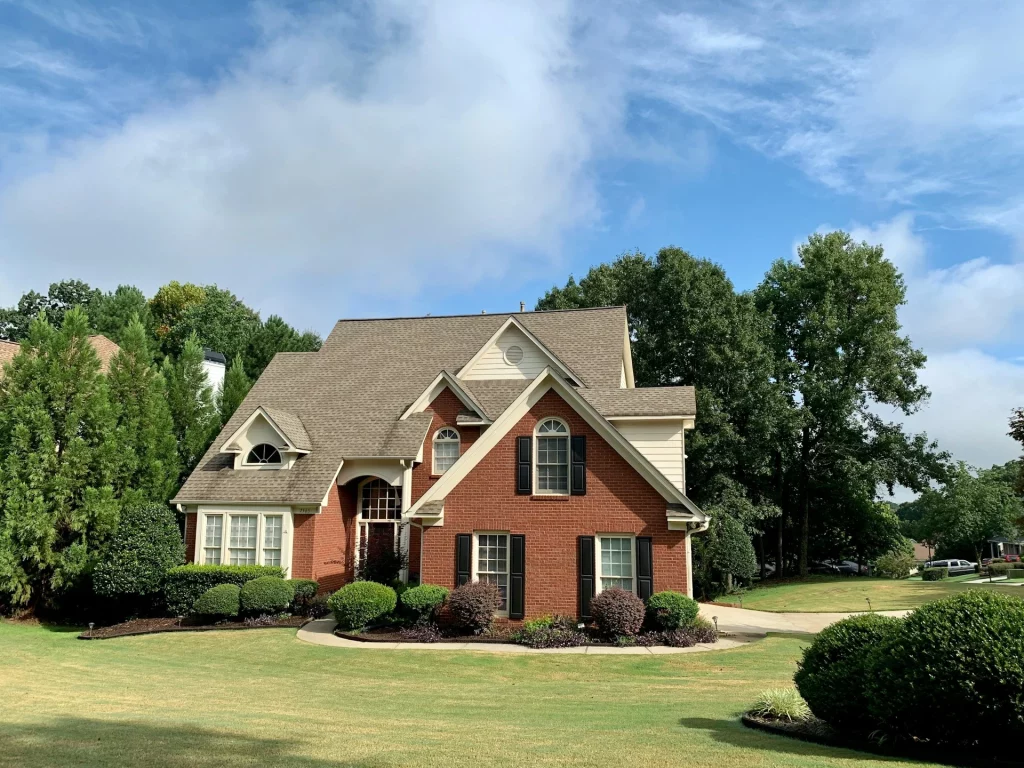The moment you decide your house needs some modern extensions, you unknowingly take a step towards increasing the worth of your property and making it more aesthetic. With years, single and double-storey buildings begin to lose their valuation in the market, and the best way to restore their value is by adding contemporary features that maximize space, help utilize unused spaces at home, and transform an old house into a brand-new building with stunning features.
A house extension requires proper planning and permission, but the question remains: is permission mandatory for each type of extension? The good news is not every home extension requires permission from authorities. As a matter of fact, you can introduce new extension ideas into your homes without having to worry about seeking permission. But for that, you must also be well aware of the permitted development rights of your area. Keep reading to know in detail how you can carry on an extension without planning permission.
Understanding Planning Permission and Permitted Development Rights
House extensions are significant decisions, but what’s even more important is the need for planning permissions. While a majority of extension plans require permission from the local authorities, some do not. Therefore, you must go through the permitted development rights of the area you live in and find out what size extension can i build without planning permission.
The extension rules in the UK vary from region to region, but certain specifications are applicable to all areas. Such as the specifications for the height and width of extensions that do not require planning permission. So, it is essential to understand permitted development rights in depth before proceeding with your home extension projects.
Extension Without Planning Permission: What You Need to Know
Is carrying out a home extension project without planning permission even possible? Well, it indeed is possible if you plan to build within your permitted development rights. Extending the front and back of your property, extensions near the boundary or roads, and 3-meter extensions in kitchens and bedrooms are some of the common examples of extensions that do not require permission as they abide by local and regional house extension rules.
What Size Extension Can I Build Without Planning Permission?
Usually, if your house extension planning remains within three and six meters, there is no need to seek planning permission. If your home is a single-storey building, then you can introduce extensions ranging between six and eight meters. However, your property must be semi-detached or a terraced building. Similarly, for double-storey front and rear extensions, three meters is the maximum limit without permission.

Specifics for Different Types of Houses
Whether your extension project will require planning permission or not also depends on the type of your house. The extension rules are different depending on the number of storeys and surrounding areas. For instance, there are separate extension rules for single-storey and multi-storeyed buildings, semi-detached and detached house extension plans, and conservation and non-conservation areas.

How Far Can You Extend Without Planning Permission: Semi-Detached vs. Detached Homes
Even if you are confident about your detached or semi-detached extension ideas, there can still be many factors that you need to consider. Failing to abide by your permitted development rights can result in unnecessary legal troubles and additional expenses in the form of compensations or penalties. So, to understand clearly permitted extensions, let’s explore the difference between the rules for semi-detached and detached homes.
| Considerations | Semi-Detached Homes | Detached Homes |
| PDR or Permitted Development Rights | You can introduce different types of extensions while following a few restrictions concerning the neighbouring wall and the boundaries of the property. | You enjoy more flexibility in extensions as your home does not have a shared boundary with neighbouring homes. |
| Specification for Height of Extensions | Your extensions must not exceed a height of 4 meters, and your rear wall should not exceed a height of 3 meters. | Both your extension height and the real wall’s height should not exceed 4 meters. |
| Restricted or Conservation Areas | It is crucial to follow conservation guidelines and abide by the local planning policies. | Local planning policies and conservation guidelines must be followed without fail. |
| Grade-wise Listed Buildings | It is crucial to meet additional planning restrictions and seek listed building consent from authorities before introducing extensions or making any alterations. | The homeowner must meet the additional planning restriction requirements and seek listed building consent. |
| Front and Rear Single-Storey Extensions | You are allowed to make extensions up to 6 meters without seeking planning permissions. | You are allowed to make eight-meter extensions without planning permission. |
| Front and Rear Double-Storey Extensions | You are allowed to make extensions that do not exceed 3 meters without needing a planning permit. | Can make 3-meter extensions without planning permission. |
Extension Rules for Terraced Houses
Introducing extensions in terraced houses is subject to a few restrictions and conditions. From exploring your permitted development rights to seeking your neighbour’s consent, many other factors play a crucial role. Some of the common rules for terraced house extensions are:
- Abiding by permitted development rights of your area.
- Consider a party wall agreement with neighbours with whom you share your boundaries.
- Abide by building regulations considering significant factors like fire safety, heating, ventilation, and many others.
Key Considerations for Planning Your Extension
The planning is the initial and the most crucial part of your home extension project. Proper planning can lead to a successful extension project, but on the other hand, minor mistakes can spoil major decisions and affect your planning. However, it is possible to avoid errors and create fabulous extension planning, and for that, you must consider the following factors:
- Decide the budget by considering every minor and major expense.
- Calculate the total time required and discuss that with your construction partner.
- Focusing on the quality of materials depends on your budget.
- Consider inspections and permissions before beginning with the project and avoid hassles later.
- Remember to inform neighbours about your extension plans, as they can lodge complaints later.
- Get your extension plans and budget customized by an expert to ensure everything is accurate.
Planning Rules for Extensions: Navigating Your Project Successfully
Before making any alterations or changes to your home, going through the local planning and construction rules is mandatory. Every area has a separate set of rules for extensions without planning permission depending on shared boundaries, detached or terraced properties, conservation areas, and so on. This is also the reason why rear and front, double, and single-storey extension cost varies from place to place depending on the demands and population of the area. To make your extension project a success, you must keep a check on the following factors:
- You understand entirely your permitted development rights and do not violate them.
- Checking on local planning policies, their guidelines, and regulations on permitted height and width of extensions.
- Seeking professional advice and creating a detailed plan.
- Consider a planning application to the local authority if necessary.
- Inform your neighbours prior to making changes to the property.
- Meeting the conditions attached to your planning permission.
The Impact of Conservation Areas on Your Extension Plans
Conservation areas are sensitive areas with restricted development rights. This is why, before making any changes to your property, you must get planning permission from the local authorities. This also means you cannot independently choose the design of your extensions, as any violation of the local laws can lead to serious legal troubles.
Therefore, considering house extensions in conservation areas can be a lengthy process, depending on the time taken by the authorities to approve extension plans. However, the good news is that for the smallest changes, no planning permission for extension is necessary.
Types of Extensions and Their Rules
The rules of extensions depend mainly on their type. For instance, the rules for single-storey extensions are much different from double or multi-storey extensions. So, before introducing any changes in your home, you must explore the rules and regulations thoroughly.
Single-Storey Extensions: Maximizing Space Without the Hassle
Undoubtedly, single-storey extensions are the best ways of maximizing space in your homes. You can either extend the sizes of your rooms or consider converting an unused space at the front, back, or side of the property into something new. For single-storey extensions, the common rules for every region are: for a detached house, the owner must not exceed more than 4 meters from the original rear wall. For other type of houses, the permit is 3 meters. If your property is not on designated land, you can make extensions of 6 and 8 meters within permitted development rights.

Loft Conversions: Adding Value and Space
One of the most common types of extensions demanded by modern homeowners, loft conversions are value-adding, expensive extensions. However, you must be aware that loft conversions are not permitted on designated land and require special permission. If your property is located on non-designated land, any changes in the roof are restricted. For example, for terraced houses, the permit is 40 cubic meters for extending roofs, and for semi-detached and detached homes, it is 50 cubic meters.
Conservatories and Orangeries: Bringing the Outdoors In
Building a conservatory or an orangery involves making changes in both the exterior and the interior of the home; therefore, the restriction for external structure is 30 sq meters. Anything beyond the permit will require special permission.
Legal and Regulatory Considerations
Rules and regulations play a significant role when it comes to making construction changes in your homes. From building regulations to permitted development rights and planning permissions, every local law and consideration is essential to meet.
Building Regulations: Ensuring Safety and Compliance
Extensions can introduce major structural changes in your homes. Breaking walls to building new spaces, every action taken has some risk factors attached, especially if your building is old. Therefore, ensuring safety and abiding by the safety rules and building regulations associated with fire, heating, electricity, and plumbing lines is mandatory.
Retrospective Planning Permission: What If You Overstep?
Changes are always unpredictable and sometimes unwanted; there can be some changes in your extension plans. If the changes are within your permitted development rights, there is nothing to worry about. But what happens when you overstep? If you fail to stick to the planning permission and fail to inform local authorities about it, the local planning authorities will, in all probability, issue an ‘Enforcement Notice’ or a ‘Stop Notice.’
Getting a notice from local planning authorities is the last thing you would want, as this will not only stop your project and lead to unpredictable delays but also get you into legal trouble. In most cases, for all your unauthorized construction work, you can be prosecuted, leading to short-term imprisonment or heavy penalties. Planning permission authorities are very strict about the rules and regulations of their area, and hence, any unplanned rectifications or construction changes are not accepted.
The best way of dealing with such scenarios is to local authorities yourself and inform them beforehand. Authorities can always consider your planning issues and suggest better alternatives. In the best cases, these authorities can also specify the allowed size of extension without planning permission and how much further you can exceed with approved authorization.
Extensions Without Planning Permission: A Closer Look at UK Regions
Throughout the UK, there are specific permitted development rights for homeowners to follow. The legal permission required in an urban area is much different from conservation or listed areas. Therefore, before you plan an extension idea for your home, you must explore a bit about house extension rules in uk and the rules of different regions.

London and Southeast
The highest number of house extensions recorded across the UK belongs to London, its surrounding areas, and the Southeast. As these regions are densely populated, the process of seeking permission is time-consuming. Homeowners sometimes have to wait for up to eight weeks to get their plans approved. The densely-populated regions of London and the Southeast have numerous properties sharing boundaries; therefore, the planning permission and construction laws vary. Even if a single or double-storey extension cost in these regions is higher, the demand for extensions never seems to go down.
Urban Areas
Other than London, seeking planning permission and abiding by construction rules is equally crucial in the urban areas of the UK, including Birmingham, Manchester, Leeds, Bedford, Glasgow, Sheffield, and many more. These urban areas are equally populated as London and have very little space available around properties. This is why extensions beyond permits require special permissions in these areas. Considering the costs, front, single, and double-strorey, or rear extension cost is equally high.
Rural Areas
One of the biggest perks homeowners in the rural regions of the UK enjoy is fewer restrictions on construction changes to properties. As there is a lot of space available in rural areas like Essex, Northampton, Gloucestershire, Suffolk, Hemingford Grey, Cambridgeshire, etc., the construction laws are much relaxed.
Why Choose Fittra for Your Extension Project?
The Construction Company Fittra is your ideal partner to create the best extension plans and convert them to reality. From creating the best design for your home to ensuring everything stays within the budget, at Fittra, the team of expert professionals takes special care to meet your expectations and deliver results of the highest standard.
Your Most Convenient Construction Company in West London
If you are seeking a reliable construction partner in West London, Fittra is the only name you need to know. With more than ten years of experience in the industry, Fittra has helped numerous residential and commercial property owners make their home renovation and extension dreams come true.
From initial consultation and project discussion to inspections post the completion of your project, at Fittra, the professionals are committed to delivering high-quality services with realistic budget estimations. The professionals can also help you navigate planning rules for extensions in your area and help find the best house extension ideas for your property, ensuring everything meets your expectations.
What Fittra Can Do for You: Our Services
If you are wondering what Fittra can do for you, this incredible construction company can help you design and implement various types of extensions, including double-storey, wrap-around, rear, side-return, and front extension. With its varied budget-friendly services, Fittra can help you with extending new kitchens, bedrooms, bathrooms, living rooms, converting lofts, changing windows and doors, and so much more.
The Fittra Difference: Why We Stand Out
Fittra is your ideal choice, and it stands out amongst the crowd of construction companies because of its high-quality services at competitive prices. That’s not it; Fittra has a long list of happy customers because the company commits to providing the best end-to-end solutions to property owners across London and the UK and promises project completion on time.
Getting Started with Fittra: Your Path to a Stress-Free Extension
Whether you are worried about house extension cost or cannot decide on designs and make an accurate plan, Fittra can make your entire experience stress-free. From the moment you contact Fittra to get a quote, you can expect guidance in every single step of your project.
The process at Fittra begins with creating the best planning and ends with inspections after project completion. Throughout this process, you can sit back and relax as Fittra’s skilled team takes care of every crucial step, ensuring the final results are highly satisfactory.
Conclusion
Before you take that final decision, it is best to thoroughly go through the permitted development rights of your area and find out the specifications. You can also seek an expert’s help when planning your home extension so that you do not have to worry about getting permission and waiting longer for the approval of your plan. Contact Fittra today if you want to make your home extension project hassle-free.
FAQs
How does the Neighbour Consultation Scheme affect my rights to extend without planning permission?
The Neighbour Consultation Scheme allows your neighbouring properties to be informed about the larger extensions you wish to introduce to your property. If you choose an extension within your permitted development rights, there is no need to seek permission or inform your neighbours.
Can I build a two-storey extension without planning permission under the new rules?
Yes, it is possible to build a two-storey extension without seeking permission from local authorities if the extensions are within three meters. Anything beyond your permitted development rights requires special permissions.
How do recent changes in planning permission laws impact extensions in conservation areas?
Conservation areas are protected by conservation laws, and hence, making changes to a property listed under conservation areas requires special permissions. The proposal for extensions in conservation areas submitted to local authorities is carefully inspected before approval. Therefore, your permitted development rights will differ in a conservation area compared to non-conservation ones.
What are the restrictions on materials and design for extensions built under permitted development rights?
Under the permitted development rights, homeowners considering house extensions must ensure materials used in exterior works (except conservatories) are similar in appearance to those materials used in the exterior of their dwellinghouse.
How can I appeal a decision if my proposed extension is deemed to exceed permitted development rights?
If your planned extension exceeds the limits of permitted development rights, then you enter into a territory that requires permission from the local authority. The best way of dealing with this type of scenario is to consult local authorities under the guidance of your builder and get a planning approval signed.








